What is Clubhouse, and How Can Brands Make the Most of It?
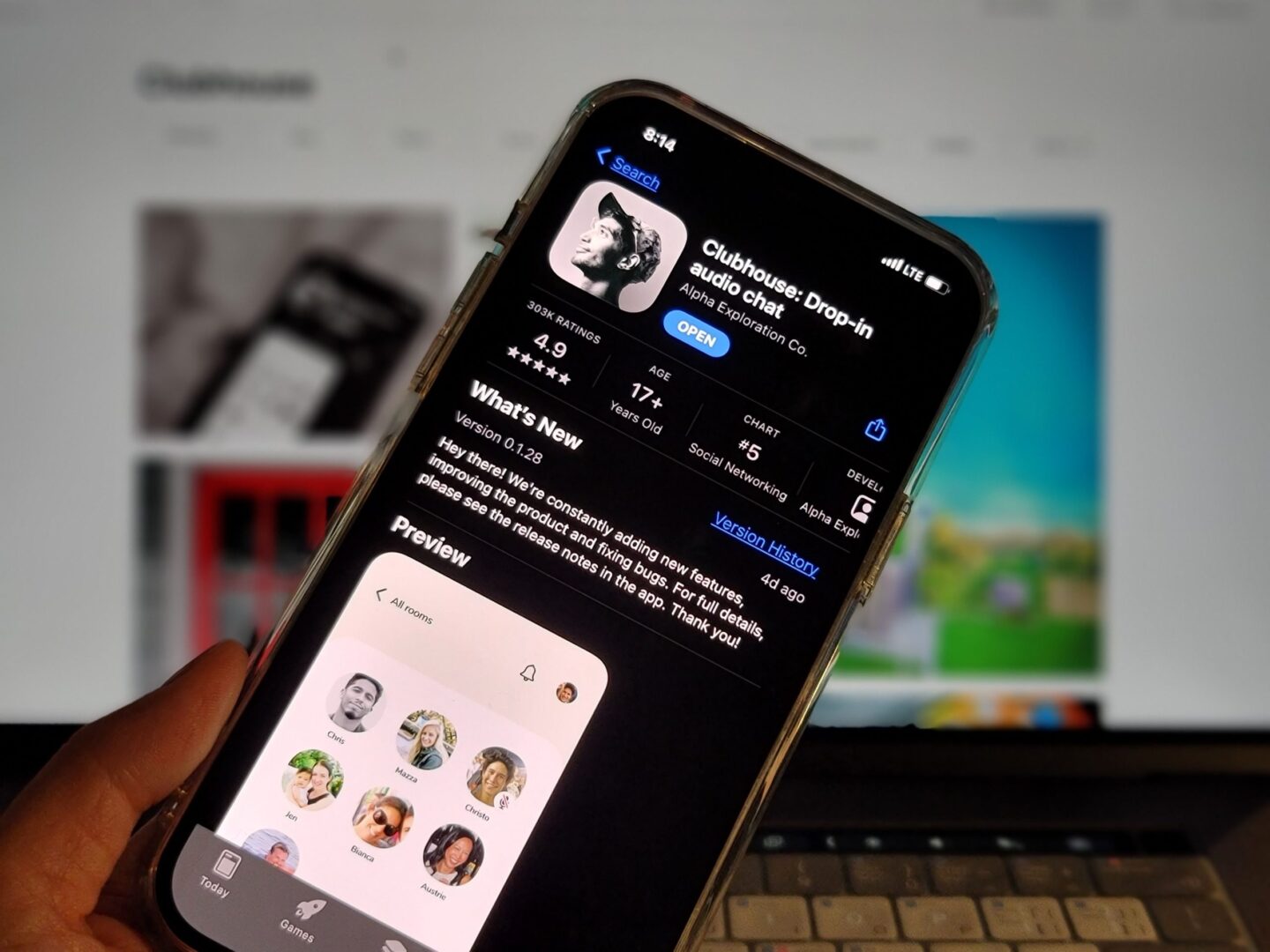

Have you ever wished you could be a fly on the wall during in-depth, candid, unedited live conversations with experts and everyday people who are passionate and well-informed about topics that matter to you? With the Clubhouse app, you can. And you might even get a chance to fly off the wall and take a seat at the table. Or, build a table of your own.
In this article, we explore what Clubhouse is and its functions, how brands, celebrities, and other notable figures are leveraging the platform, and some tips and considerations to make in determining if Clubhouse is a good fit for reaching your audience and your goals.
Clubhouse is a purely audio-based social app that launched in March 2020, and has been growing in popularity since. According to a recent town hall meeting with Clubhouse’s CEO Paul Davidson, there are currently 10 million Clubhouse users – up from just “2 million users in January 2021.”
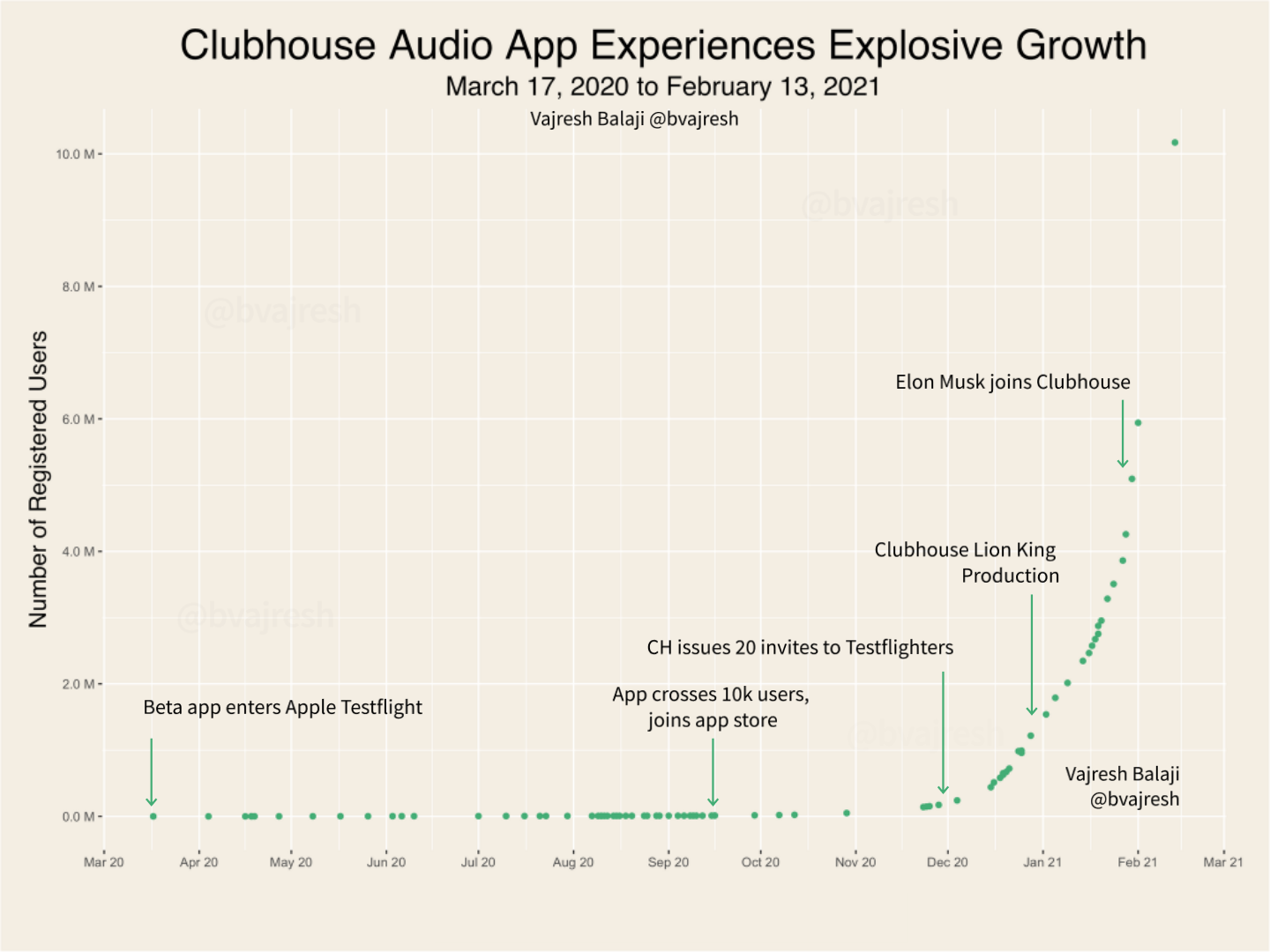
Clubhouse is focused on sharing information, conversation, and collaboration, with members offering their insights, opinions, and advice about topics of personal or professional interest within audio chats, known as “rooms.”
“Clubhouse has started a movement: creating a social network that is based purely on audio, rather than visual. For so long we’ve been hearing about the shift from photos to videos; landscape videos to vertical videos. The medium has been visually oriented. Clubhouse is flipping the script to bring the fun of podcasts into a live forum that allows people to engage with speakers. This is gaining momentum as other Social network stalwarts start releasing copycat versions of the audio-based platform.”
— Avi Ben-Zvi, Group Director of Paid Social at Tinuiti

When creating a Clubhouse room, members can choose if they would like that room to be Open, Social, or Closed. Let’s look at which each of those mean:
Members are able to create their own digital room to discuss whatever topic they would like, “drop-in” to in-progress “open” rooms at any point in the conversation, and leave the room just as quietly as they arrived whenever they choose. There are no sounds to indicate anyone has joined or left the room, freeing users up to pop in and out of different rooms until they find one that resonates with them.
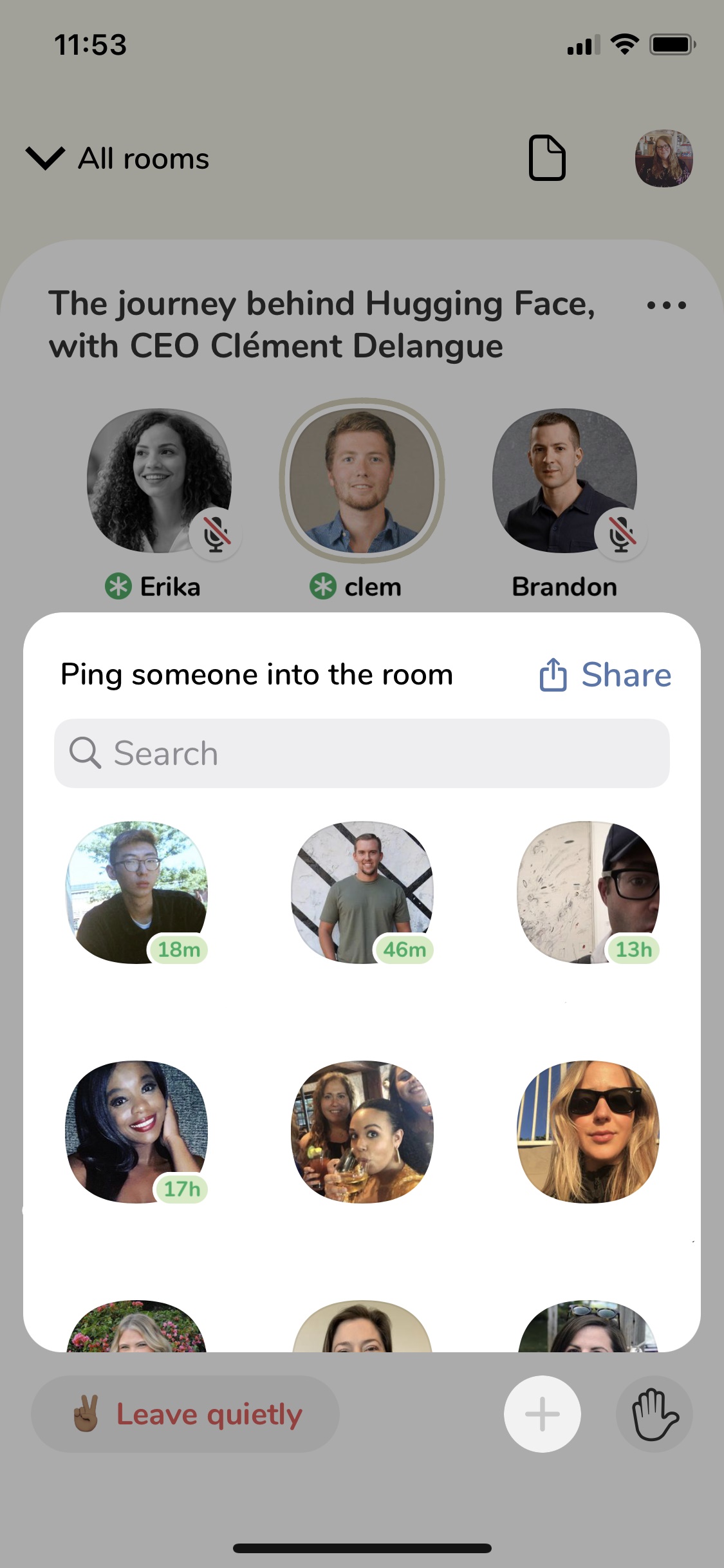
Currently only available on the App Store for iPhone and iPad, the excitement surrounding Clubhouse has been partially fueled by its invite-only method of joining. While it is free to download Clubhouse – and free to use and engage on the app as often as you’d like once you’re a member – you will first need to secure a coveted invitation from an existing Clubhouse user.
With each new member being given limited invites upon signing up, and the opportunity to earn more as they use the app, they can be understandably hard to come by. In fact, there is a subreddit dedicated to giving, buying, and selling Clubhouse invites. But that exclusivity is about to change as the app matures and becomes available to a greater number of people.
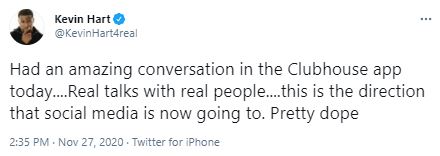
What do Oprah, the CEO of Pinterest, Elon Musk, and comedian Kevin Hart all have in common? They’re among the first big names in advertising and entertainment to join Clubhouse. In fact, Elon Musk is largely credited with Clubhouse’s recent explosion in downloads, and the resultant press that his interview brought with it.
“Just like Twitter a decade ago, Clubhouse is gaining popularity amongst celebrities and household names. The biggest impetus came with a 1 hour interview with Elon Musk that vaulted Clubhouse into the mainstream. This is continuing with macro celebrities, but also CEOs and industry experts across the board, giving Clubhouse greater credibility.”
— Avi Ben-Zvi, Group Director of Paid Social at Tinuiti
There is truly something for everyone on Clubhouse, making it an ideal space for advertisers across every industry to reach the right audiences—whether those audiences are already familiar with their brand, or not.
Similar to other social apps and platforms, your Clubhouse feed is personalized based on the interests you’ve selected, who you’re following, and what clubs you have joined. You can adjust your interests at any time, just as you can join new clubs and follow new people.
Interests are broken out into the following primary categories, with sub-category interests available within each:
Once you have selected the sub-category interests that are most important to you, related clubs and upcoming chat rooms will populate in your feed. Selected sub-category interests can be activated by simply tapping them, which changes their background from white to blue.
In the screenshot below, we have selected the following interests: Advertising, Writing, Mindfulness, Nutrition, Health, and Fitness.
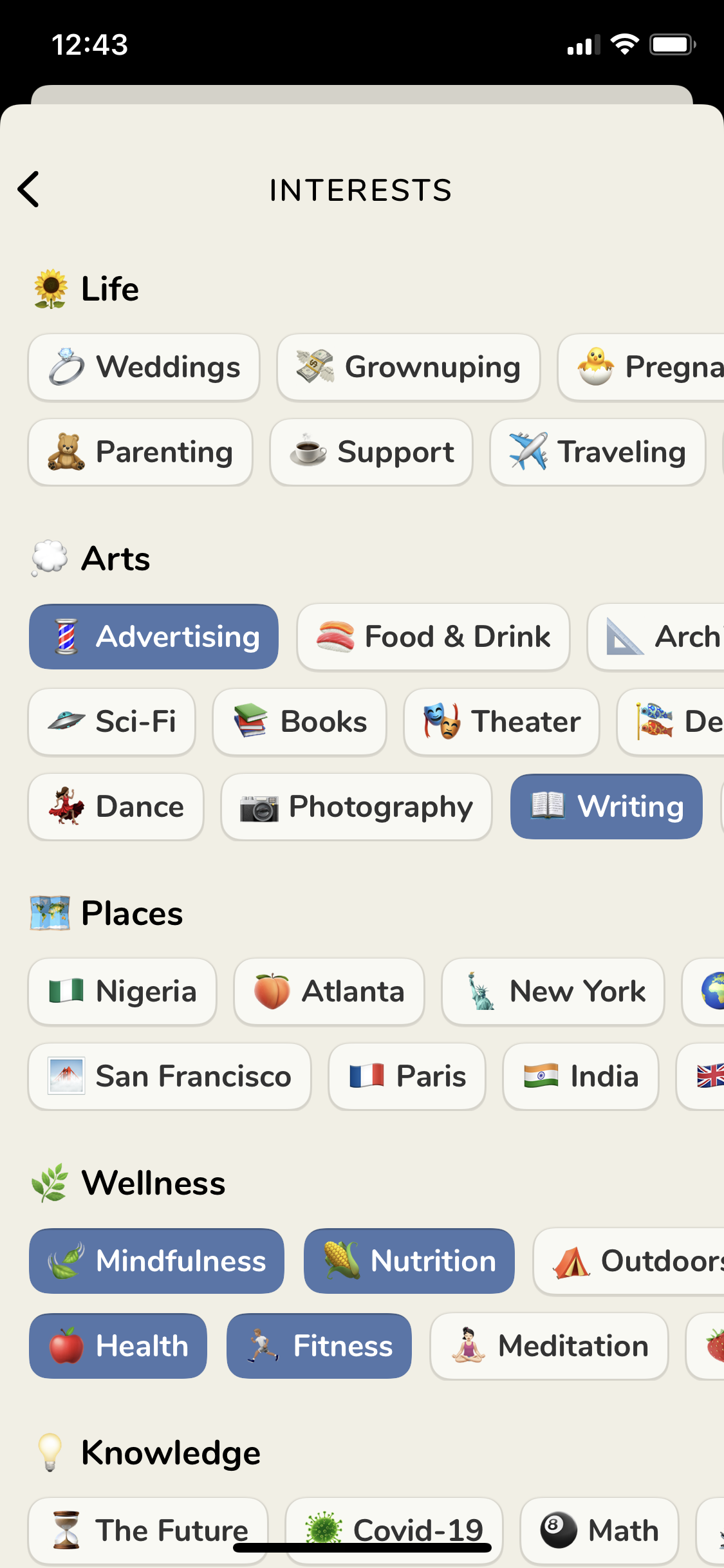
Clubhouse rooms are not stored for later listening, but a recording of a chat you missed out on may still be available. It is against Clubhouse’s Terms of Service to “record any portion of a conversation without the expressed consent of all of the speakers involved.” With those rules clearly laid out, users do have the option to indicate that the room will be recorded ahead of the conversation beginning. We recommend adding this information to the subject line and description of the event to ensure it is easily recognized by all who speak or join the conversation that it will be recorded.
In this age of amplified privacy concerns in the digital space at large, and ongoing preparations for upcoming privacy changes, Clubhouse is not without its own share of considerations. In addition to concerns regarding how mutual phone contacts are displayed within the suggestions, Clubhouse has made headlines for other privacy-related issues and concerns, including clubhouse rooms being breached.
In February 2021, Reema Bahnasy, a Clubhouse spokeswoman, shared that “an unidentified user was able to stream Clubhouse audio feeds…from “multiple rooms” into their own third-party website.” Clubhouse has issued a permanent ban on the user, and “installed new “safeguards” to prevent a repeat,” though “researchers contend the platform may not be in a position to make such promises.”
We encourage users and advertisers to be mindful that there is no way of stopping individual users from recording conversations in Clubhouse rooms, and to speak with the assumption that they are indeed being recorded. While it does go against their terms and conditions to do so, as noted above, there is simply no guarantee that what you say won’t be recorded.
With no self-serve ad placements currently available on Clubhouse, brand representatives have embraced the more organic methods of getting the word out about their brand that are available. This includes creating their own clubs, hosting rooms, sponsoring rooms, and joining in discussions relevant to their industry.
Thanks to Clubhouse’s recently announced Clubhouse Creator First initiative – which is kicking off with 20 creators – we can expect the number of valuable partners on the app to continue growing. This “accelerator” aims to “help aspiring hosts and creators on the platform build their audiences, connect with brands, and perhaps most importantly, monetize their shows.” The first three areas Clubhouse plans to test on the monetization front include tipping, tickets, and subscriptions.
Clubs are focused around specific interests, with all club followers getting a notification when a new event is posted. Creating your own club on Clubhouse opens up the opportunity to build and nurture a dedicated community, and host rooms that are only available for your club members.
As R. Kenner French, Chief Technology Architect for Vast Solutions Group, highlighted in his recent Forbes article, offering up free advice on Clubhouse resulted in fresh business.
He “started hosting daily chat rooms about advanced tax strategies for entrepreneurs,” answering listeners’ questions. These organic conversations led to new clients for his business, but were also importantly “fun and rewarding.”
Think of the aspects of your own business that you are most passionate about, and how you might be able to incorporate those into Clubhouse chats that can benefit listeners and your bottom line.
The power of influencers on social media is well-known, and partnering with them on Clubhouse to enhance your exposure is no exception.
e.l.f. cosmetics and Chipotle Join the Conversation in the Disruptors Club
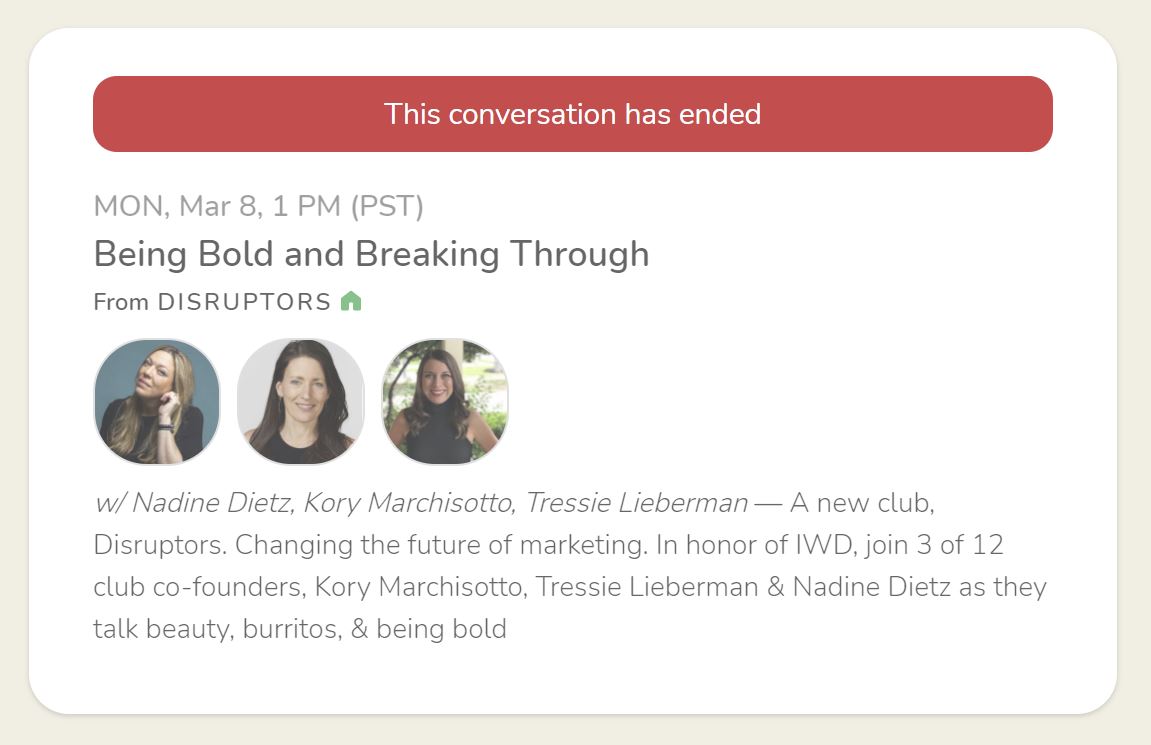
As fans of lip gloss and guacamole may already be aware, e.l.f. cosmetics recently ordered up their second serving of a collaboration with Chipotle. To promote this exciting launch, e.l.f. turned to the usual suspects of social media, including TikTok and Instagram.
But they also notably included Clubhouse as well, with CMO Kory Marchisotto taking part in the “Being Bold and Breaking Through” conversation in the Disruptors club to “talk beauty, burritos, & being bold,” alongside Tressie Lieberman, VP of Digital and Off-Premise at Chipotle Mexican Grill.
As their Clubhouse bio attests, the Disruptors club serves as “A home for anyone who is leading or inspired by disruptive strategies changing the future of marketing,” making their audience a great match for e.l.f. and Chipotle.
Hulu, Bomani X, and The Cotton Club
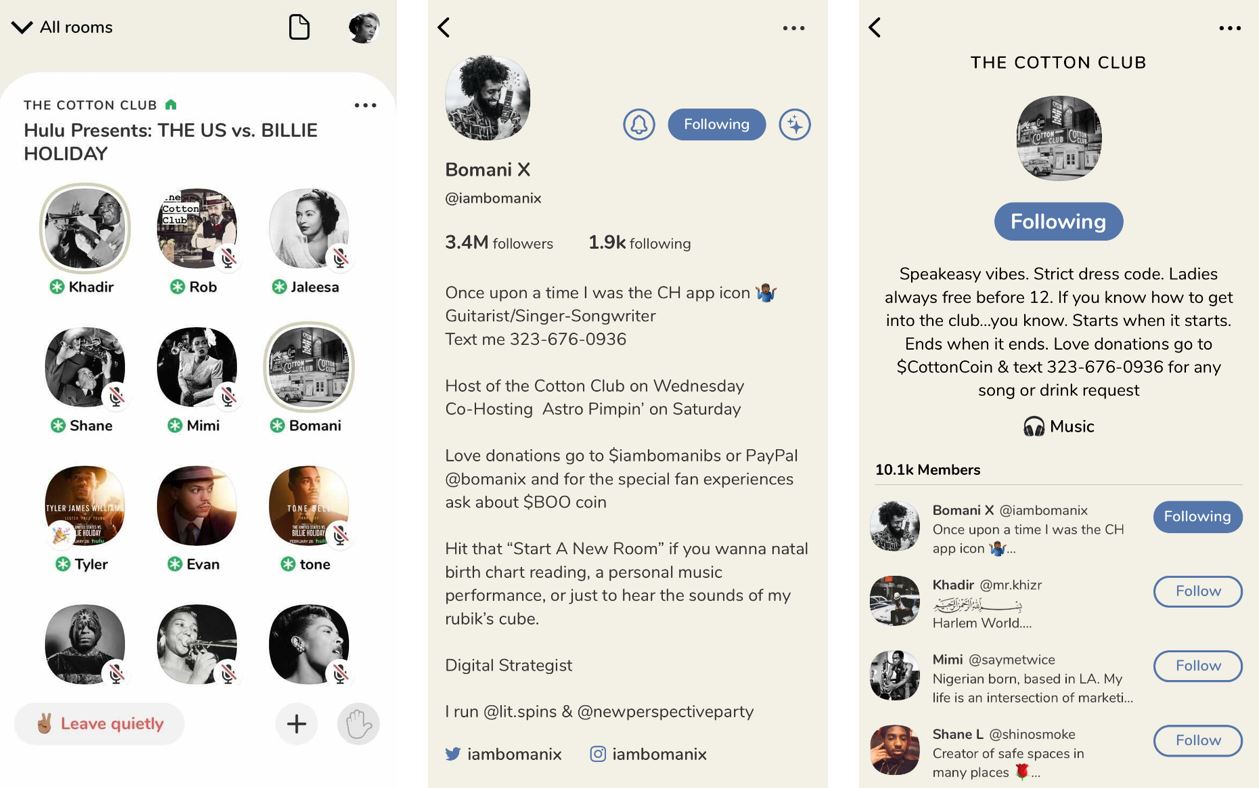
Hulu recently partnered with Bomani X, who boasts 3.4M Clubhouse followers, to promote their upcoming release of The United States vs. Billie Holiday in an also-very-popular club that he hosts—The Cotton Club. Within 10 minutes of the conversation kicking off, the room had welcomed ~3,000 listeners. Among those joining the conversation were talent from the biographical film itself, as well as the producer.
“I think the experience of Clubhouse is like no other. You can literally be on a stage with the CEO of a company, your favorite actress, or the person who makes the hiring decision for a job that you’re looking for. There is no other platform like Clubhouse, and that’s why I truly enjoy it.”
— Keisha McCotry, Associate Director of Public Relations at Tinuiti

Advertisers understand the power of social listening tools to keep tabs on sentiment regarding their brand, but the only social listening tools that can monitor Clubhouse conversations are the ones you were born with – your ears.
Give yourself a chance to enjoy the benefits of Clubhouse as a listener; drop into conversations related to your industry, and pay attention to what’s being said, and what questions are being asked. Also – just as you do when crafting content, creative, and ad campaigns – think of all the reasons consumers shop your brand, and join an array of conversations in those different interest categories for the greatest insights.
In example, let’s assume your product offering includes a selection of face creams. To learn more about what people are saying about face creams, your natural instinct would be to join in on a beauty-focused conversation. And – you’d be right. But what are some of the other distinguishing factors of your face cream that might play into consumer interest? Is it affordable? Cruelty-free? Made from natural ingredients? To learn more about consumers’ thoughts on those elements, you might also want to listen in on conversations related to shopping on a budget, animal rights, and wellness, respectively.
The casually conversational and unedited nature of Clubhouse is a huge part of its appeal, and we encourage brands to embrace the opportunity to join in and explore a new avenue to give a voice to their business. However, we also recommend creating internal guidelines for what you are – and are not – open to discussing. These can include entire topics you’d rather not give your take on, and certain language you want your team and brand representatives to avoid using.
Spend some time brainstorming about the topics you expect might come up, and be sure to familiarize yourself with appropriate—and authentic—answers for each. It’s not possible to anticipate every question that someone might ask, but prepare as best you can for those of greater focus and impact to your business.
Prepare for an upcoming Clubhouse event just as you would for any other speaking engagement, being mindful of those guidelines you’ve set. Make yourself notes about topics you want to explore, stances you want to take, and news you plan to share.
Since Clubhouse is audio-only, you don’t have to physically prepare yourself like you would for an in-person or video-inclusive meeting, or worry about any notes you’ve taken showing up on-screen. You can surround yourself with a mountain of virtual and sticky note reminders, and no one will be the wiser.
Clubhouse makes a great space for employees at all levels of your organization to lend their voice wherever it is best suited. While we do recommend having certain guidelines established regarding what should and shouldn’t be shared for brand safety, as noted above, it’s important to tap into the passions, skills, and knowledge of your team—from interns to the CEO.
In a Vogue Business article that delves into the “intimacy” appeal of Clubhouse, Moj Mahdara, co-founder and CEO of Beautycon Media, shared their take on the downside of over-regulation…
“I think it will be a very bad idea for brands to regulate who on their teams can and cannot speak,” says Mahdara. “If you have an enthusiast within your brand who is enthusiastic about the formulation, productions, upcoming SKUs or strategy, they [should be allowed to speak]. We are in an era of collaboration over competition. That’s the most important thing for people to understand.”
According to the famous quote by Oscar Wilde, “Imitation is the sincerest form of flattery,” though in the digital world, we’d be keen to argue that imitation is the greatest indicator of success. After all, people like Mark Zuckerberg don’t tend to copy things they don’t see immense value in.
There are already a number of “Clubhouse clones” reportedly in development from some of the biggest names in social media and audio streaming, and we expect more to follow.
Should Brands Wait to See How Facebook and Twitter Platforms Compare?
With social media giants Facebook and Twitter both actively working on Clubhouse-type projects, it is understandable that some brands may choose to “sit out Clubhouse.” It is natural to gravitate toward platforms that we are not only familiar with, but understand how to leverage in accomplishing a variety of marketing goals based on years of experience working in them.
However, there are some considerations we recommend you keep in mind to help decide what’s best for your business, including ways in which Clubhouse has an edge over the competition.

At the top of your Clubhouse feed, you will find a magnifying glass, envelope icon, calendar icon, bell icon, and your profile picture. Let’s explore the function of each:
As advertisers, many of us are accustomed to doing much of the heavy lifting “behind the scenes.” We work closely with our clients to understand their goals, create and optimize their assets, build and develop their campaigns, and continue to innovate based on performance, changes in their particular vertical, and fluctuations in the performance marketing landscape as a whole. Much like parents sending their child off to the first day of college, we arm our campaigns with everything they need to succeed, and take a step back to see how everything falls into place.
Our next steps are informed by how well that “launch” performs, and we continue to adjust and improve our methodology. But with Clubhouse, there is no behind the scenes curtain to work behind. To be seen – or in this case, heard – you have to be an active part of the conversation. Literally.
Want to learn more about joining that conversation in a very deliberate, strategic way that embraces innovative tactics with a brand-safety focus? Contact us today—no invite required!
